Humor in Non-Lang Specific
Activities (Lesson Plans)
Digital Games: Not Language Specific
PRACTICAL IDEAS & RESOURCES
Resources in this section curated by: Cameron Teubner-Keller

How to learn languages with video games | YouTube Video
This video discusses how video games can be used for language learning. The creator goes over possible benefits such as making studying fun, simulating immersion, exposure to rare vocabulary, and context-based learning. Dialogue-based games are more helpful than action-based games as they give the learners more exposure to the target language.

Polyglot shocks native speakers in VRChat | YouTube Video
In this video, YouTuber Ikenna, plays the virtual reality game VR Chat. Throughout the video, Ikenna interacts with expert-level speakers of multiple languages. This video showcases the great potential that games have for giving learners contexts to actually use the target language and interact with expert speakers of their target language.

VRChat Etiquette – Unspoken Rules of VRChat | Article
These "unspoken rules" for VRChat cover common game etiquette practices. People often forget that even in virtual reality, they are still interacting with real people. For teachers and learners using this game for language learning purposes, it is essential to be aware of the acceptable and appropriate norms of the community/server one is joining. This is especially important when joining servers for practicing languages, where practicing the acceptable pragmatic/cultural norms is just as important as practicing the language. Understanding digital game norms and pragmatics is also important for language learners as the internet becomes an ever-increasing part of our lives.

VR chat etiquette? | Reddit Post
This is a reddit post covering similar topics of VRChat etiquette. The comments section of the post includes a discussion by players. This would be useful for learners and teachers alike who want to ask questions before playing or simply discuss certain pragmatic points with actual players of the game.

Socializing in VR Chat | Reddit Post
This reddit user discusses how VRChat assisted him in becoming more social. The discussion in the comments is centered on how virtual reality helps a lot for people with social anxiety, which is another important element of the potential use of VR in language classrooms.
Acquisition can be anxiety-inducing for socially anxious language learners because pragmatics requires using language in situated contexts with real world consequences. Therefore, VR can be especially helpful for learners with low willingness to communicate in the classroom; VR can provide situational contexts with low-stakes yet real consequences for learners to practice their pragmatics.

Learn a Language in VR Scenarios with these Apps | Blog Post
This post reviews current virtual reality games and apps made for language learning. The author discusses the importance of immersion and how VR can make up for a lack in actual communities of practice. These games allow learners to be immersed in specific contexts and use the target language to complete tasks. Using language functions/skills in VR allows learners to connect what they are told about language to actual experiences.

Players Leap Language Barriers | New York Times Article
This article discusses the mobile game Game of War: Fire Age and its potential to translate languages in real time to allow communication between monolingual speakers of different languages. Players in the game provide translations when the automatic system can’t do it, which are then used by the system in the future to assist in future translations. Ideally learners would be using their L2, so it is possible for learners to set the game up to translate into their L2 or to turn off the translator in general. However, there are still benefits from seeing how translations might differ slightly from expert language use, and intercultural pragmatic communication is still present.

Mondly AR: Augmented Reality Language Learning | Mobile Game
Mondly AR is a mobile augmented reality language-learning game. It uses mobile phones as a lens for augmenting reality. This game assists in learning a language by adding random objects, such as animals, into a nearby space that can be viewed through the phone. The game also provides "real-life" conversation with their AI bot, "Mondly". The AI uses gestures and facial expressions along with the target language to create dynamic interactions. It also gives instant feedback on pronunciation. This app could be a possible language learning game that could be implemented into classroom instruction.
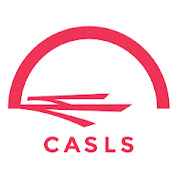
Using MMOGs for Language Learning | YouTube Video
This video from the CASLS center at the University of Oregon explains how one can use MMOGs for language learning. A step-by-step guide is included on how to get started, from finding a game that has players who use the target language, to learning the game through guides in the target language, to observing other players' language use, and finally playing along using the target language!

Live Game Chat | Meme

This is a meme depicting multilingualism in the gaming community. It shows how gaming can be a great context for learners to have exposure to different languages as well as how they can use their L2s to express themselves in communicative ways.

Fanfic Etiquette? | Reddit Post
This reddit user requested information about etiquette for fanfic websites, asking questions such as:
- Is it considered lame to reply to reviews?
- Is it creepy/stalkery to leave kudos or comments on the same "fic"?
- Do you want to know if you made a grammar mistake?
These questions demonstrate how even websites such as fan fiction sites have their own pragmatics and appropriate discourse skills. The use of words such as lame or creepy show that the reddit user is considering the perlocutionary effects of their writing, or how they will be perceived by others in the community. This is an example of how participating on these sites can be helpful for practicing writing skills, especially if people point out grammar mistakes, as the comments on the post imply.

Learning by playing: serious game teaches intercultural skills | YouTube Video
This YouTube video showcases a game being used by the ESCP Europe Business School to teach students intercultural skills. In this case, it specifically teaches intercultural management and workplace skills, which are still pragmatic skills that language learners must learn as well. Video game usage provides versatility for teaching intercultural communication skills.

Ikenna | YouTube Channel
This channel was created by a man who enjoys learning languages. He currently knows 7 languages, makes videos about playing video games, and interacts with speakers of other languages. He is currently creating his own language learning game. In his videos, he utilizes his language skills to have intercultural, multilingual interactions. In doing so, he is also learning pragmatic skills required to speak in those languages. By speaking with expert speakers of languages, he refines his own language skills.

Is It Possible To Learn A Language Playing Video Games? | Article
This article discusses the use of video games for language learning. Video games provide in-context learning, repetition, and listening and reading practice. They often have related digital spaces where people interact with those who speak the target language (online forums, message boards, etc.). The article describes in detail different gaming platforms and how to get access to games in a target language, as well as specific games and their language options.

Learn or Die! 5 Epic Ways to Learn Languages by Playing Video Games | Blog Post
This blog post discusses how one can learn languages with video games. However, this one focuses heavily on popular commercial games such as Call of Duty and Borderlands. Although it includes apps and children's games, the article focuses heavily on commercial games, their available languages, and why learners might be interested in them.

Escape From Byru’Moxia | Online Game
This game focuses on intercultural competence and uses a game-like narrative to teach learners how pragmatic factors such as power, social distance, and severity might show up in language use. By playing, learners become aware of how these dynamics present themselves in everyday communication. Players solve puzzles related to these pragmatic factors to be able to move forward in the game, which helps them learn appropriateness of language choices based on illocutionary and perlocutionary effects.
Emoji (Not Language Specific)
PRACTICAL IDEAS AND RESOURCES
Resources in this section curated by: Arely Zarate-Chavez

What’s the Difference Between Emoji and Emoticons? | Article
Emoticons can be thought of as a predecessor to the emoji. Emoticons are a stylized combination of punctuation, letters, and numbers used to show emotion or sentiment. Some examples include {^_^} and {uwu}. Some popular emoticons used in the US are :-) , XD , and <3. Emojis are distinct in that they are a pictograph of a face or icons of objects. This article also gives some background on the invention and history of emojis.

Emojipedia | Website
Emojipedia serves as an online dictionary for emojis. The search function works with both words to describe the emoji, as well as the emoji itself. It starts by giving a short description of the physical appearance of the emoji, as well as a few possible meanings. This is sometimes followed by similar emojis and how they are distinct from the currently viewed one. It also shows different names for the same emoji. Under this text different iterations of the emoji on different hosts are shown.
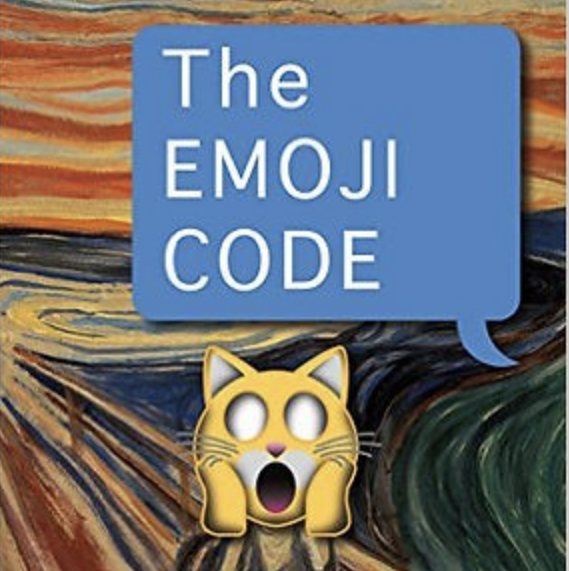
The Emoji Code | Book
Vyv Evans is the leading researcher of emojis, he has written several papers on the topic and even has a book "The Emoji Code" published. He has used several different disciplines, from linguistics to archaeology, to help decode this thought to be 'universal language'. His work has become internationally renowned in the field of digital communications, and we wish we had been able to spend more time with his work.

Emoji Translate | Website
This translator attempts to translate languages into emojis. It does this by replacing content words with an emoji. Many concepts cannot be translated easily, but it's interesting how it tries to convey some complex concepts. When attempting to translate "I see you" it gives the translation "I 👀 ➡️👤". Out of context it would be very difficult to extrapolate the meaning of "you" from "➡️👤".
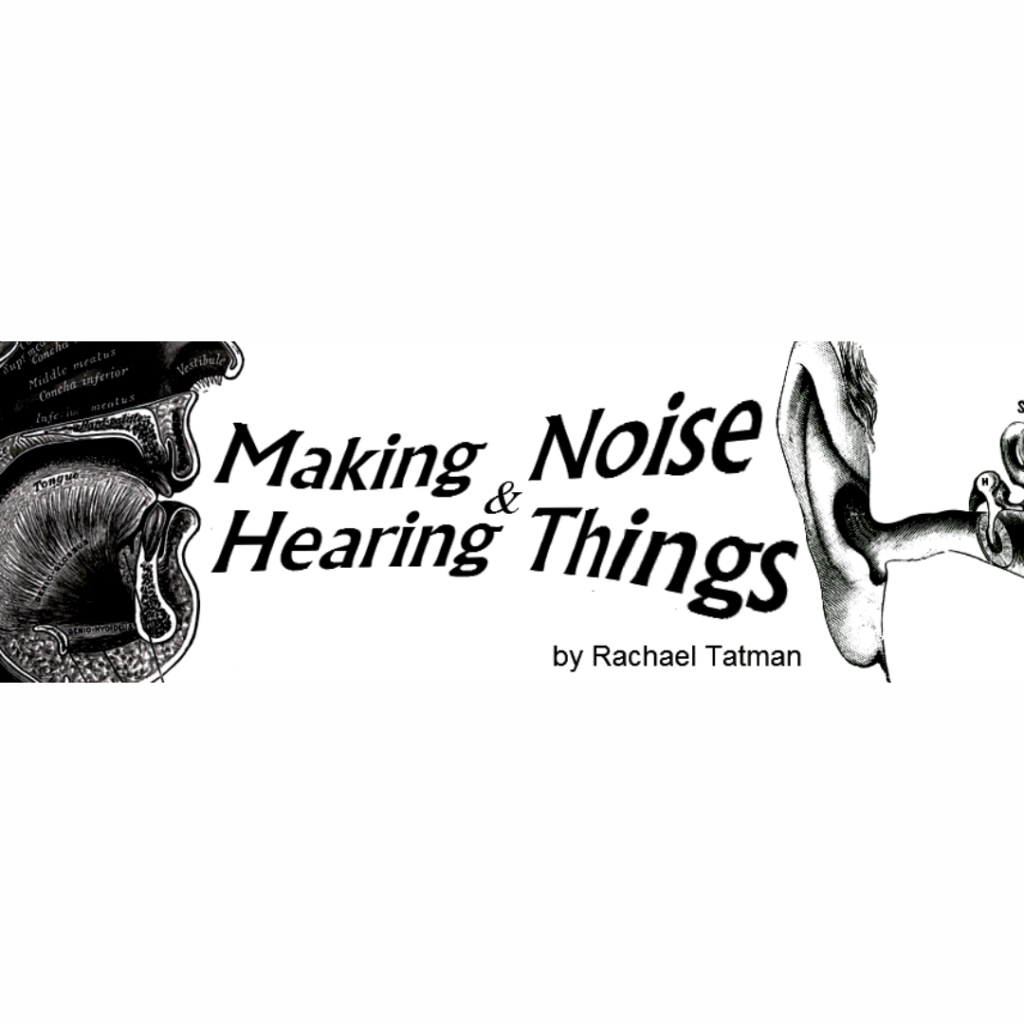
Do emojis have their own syntax? | Blog Post
This blog post attempts to decode the syntax of emojis. Is there a word order? The experiment asks people to choose between two options of emoji sequences that would best represent an image. They found that while emojis do not have a fixed syntax, there is definitely message encoding that reflects linguistic relationships between items.

How to Use Emojis | Article
This article shows that while some may use emojis as replacements for words, others use them to soften speech, add nuance, and encode their own meaning. It reminds us that emojis don't follow grammar or syntax rules, and can vary in meaning widely.

Oxford Dictionaries' 2015 Word of the Year Is the "Face With Tears of Joy" Emoji | Article
Traditionally we've seen the word of the year be new wave words, like unfriend or GIF, but in a twist that hasn't been seen since, an emoji took the top spot. This decision seems to emphasize the importance of emojis in the new digital language and how essential they have been and will continue to be in our daily lives.

How Emojis Have Completely Revolutionized Communication From Tears of Joy to Bacon | Article
While text has been a basis of digit communication, emojis have become a core part of the online space. Our texts and social media are filled with emojis, it's no wonder that "😂" or "Face with Tears of Joy" was named word of the year in 2015.

Kim Kardashian’s Kimoji Emojis: Everything You Need To Know | Article
Celebrities are now influencing the digital space in a new way. Kim Kardashian capitalized on her memes and released an emoji keyboard all about her. She wanted to provide "Emojis that you don't see on your phone [already]".

How Advertisers Are Embracing Emojis | Article
It may still seem cheesy to many of us for corporations to try to use emojis in their ads, we have to admit it's pretty clever. Emojis are more marketable than ever if so many of us are using them. This cultural relevance encourages the licensing of emojis to be used in ads. The following is an example of how emojis are being used in advertising, in this case a mobile network.

Why The Emoji Movie Fails | Article
You've probably heard of this fun movie based on emojis! Well, many argue that this is less of a movie and more of a big ad. There is a fine line between framing the emoji in the mobile space and advertising brands. There no way to talk about emojis without talking about social media, and the emoji movie also seems to tie them into mobile games, as well as self identity. While Gene attempts to find his identity outside of his set emoji status as a "Meh" face, this does not really agree with our understanding of emojis. We've seen that the ambiguity of the emoji is one of the reasons we love them so much. There is no reason that a "Meh" has to always mean "Meh".

Top 15 Most Popular Social Networks | Image
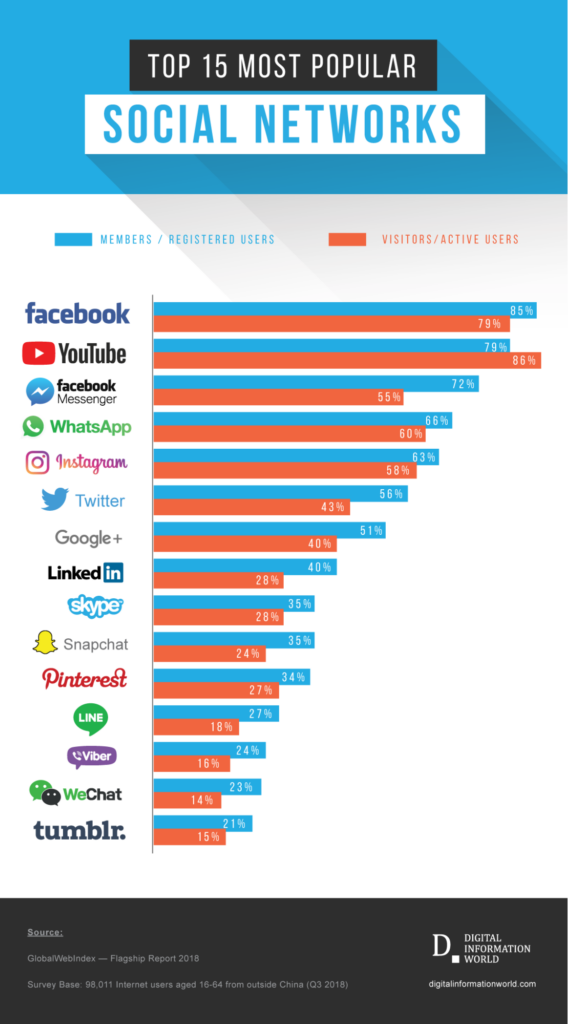
This source shows the amount of active registered users on the most popular social media platforms outside of China (as of 2018). While giving a visual of how popular and used a platform is, it also shows the influence and marketability of such networks. This varies from country to country of course, but this statistic shows that global patterns can be shown in social network use. We are more connected globally than we have ever been. This source is somewhat incomplete as it does not analyze their user base under the age of 16, which makes up a large number of users of many social networks.

19 Facebook Demographics to Inform Your Strategy in 2023 | Article
Facebook is a social media network that was founded in 2004. It is by far the biggest social network, with 2.37 billion monthly active users. While it may not seem like it, Facebook is being deemed a great equalizer in social media. It has a growing senior population, but also is able to reach more 13-17 year olds than other networks. It also boasts the fact that around 75% of US adults log into Facebook everyday. While originating in the US, Facebook is used worldwide, and actually has the lowest number of monthly users in the US and Canada.

How to use Emoticons on Facebook: Emoji and Smileys | Article
This article shows the user four different ways that Facebook has embedded the use emojis to the platform. These include the ability to host all the emojis available on your smartphone, having Facebook emojis that you can select from when making a post or comment, emoji "How Are You Feeling?" stickers that can be selected when posting a status, and Emoji reactions that were added alongside the traditional "Like" option.

Instagram Statistics That Matter for Marketers [2023 Update] | Article
Instagram is a social media network that was founded in 2010. It focuses on the presentation of photos. It has around 1 billion monthly users. Over half of the user base is under the age of 34. If follows only Facebook as a network users log into daily. Over 90% of Instagram users follow a brand. It's no wonder how brands advertise on social media has become even wider reaching.

Does Using Emojis on Instagram Lead to More Engagement? | Article
50% of Instagram captions and comments contain emojis. It has been shown that the use of emojis increases engagement with a post. This can be especially beneficial when thinking of how users are now using their social media influence as a way to break into traditional advertising markets.

29 Twitter Stats That Matter to Marketers in 2023 | Article
Twitter is a social media network that was founded in 2006. It was originally a text based app that had a limit of 140 characters. (It now allows 280 and is not limited to text). It has around 330 million monthly active users. Around 20% of Twitter's users are American, followed closely by Japan. Even if they don't use it, most people are familiar with tweets and Twitter.
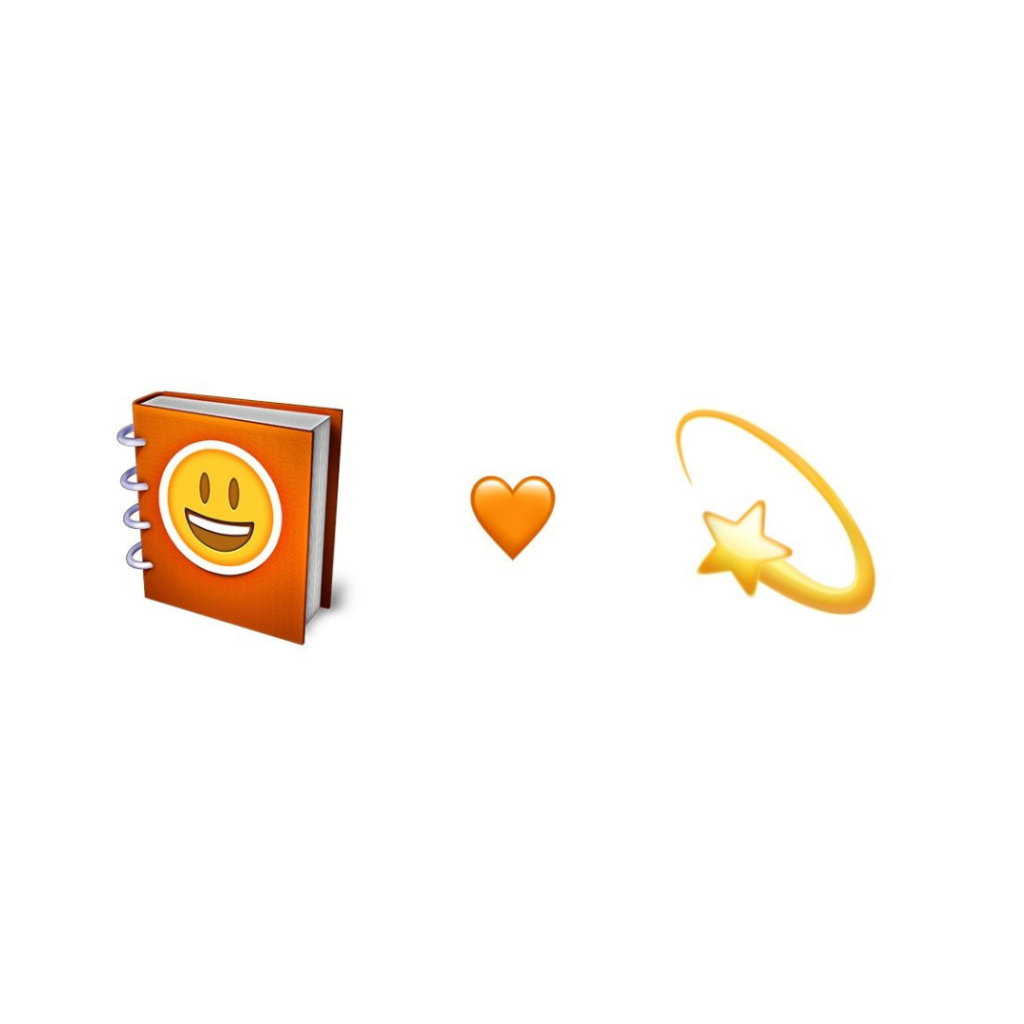
Emoji Tracker | Website
First launching on July 4th of 2013, this website tracks emoji use on Twitter in real time! Hovering over any of the boxes on screen gives the emoji the statistic is for. Clicking on it shows the most recent tweets using that emoji, as well as the ranking of the emoji among users based on number of tweets involving it.

People Around The World Use These Emojis The Most | Article
This article discusses how a study "analyzed 427 million messages from nearly 4 million smartphone users in 212 countries and regions to see if emoji use was universal or differed based on user location and culture". They found that there are definitely some overall trends in emoji use, like the crying laughing emoji face was the most popular emoji by far. They also found that different countries had unique trends in their emoji use, such as France and Australia using more happy emojis, while Mexico and Peru used more negative emojis.

How Different Cultures Perceive Emojis | Blog Post
Just as we have been told that in some parts of the world giving a "thumbs up" can actually mean "up yours", this blog analyzes how emojis can vary in meaning due to distinct cultural understanding. Hand gestures, smileys, and food emojis are included in this analysis, as well as tips on how to use emojis in a cross cultural context.

Cross-cultural similarities and differences in emoji usage | Image and Article

This chart shows the rank of the most popular emojis between Eastern and Western cultures. It was done by Engineers from Penn state, where they were examining some of the differences between how the two cultures perceive emojis. In the article linked through the image, one example they gave was how westerns will use negative emojis associated with health care, whereas Eastern culture will use more obvious emojis such as pills or hypodermic needles.

Why emoji mean different things in different cultures | Article
This article discusses some of the differences between Emojis in the U.S. and their usage in China. It also quotes Keith Broni, who is the first person to be hired as an emoji translator. The article emphasizes the difference between such emojis as the angel, which in the U.S. shows innocence or a blessing, but in China it is a sign of death. It also discussed the clapping emoji, which in China is used as an insinuation of sex or love making, while in the U.S. it is used for congratulations or praise. Overall, it shows some of the issues with calling emojis a 'universal language'.

Apple Teases 230 New Emoji in Celebration of World Emoji Day | Article
This article contrasts with the previous because it is from 2019 and discusses Apples preview of new emojis celebrating diversity. The release of 230 new emojis was in celebration of World Emoji day, and therefore Apple found it necessary to release 230 emojis that represented different groups around the world, everything from sexual orientation to ethnicity.

Use Memoji on your iPhone or iPad Pro | Article
Today we have gotten tired of emojis that just sit on the screen and don't move or talk, now we are seeing emojis that you can actually have mimic your facial expressions and communicate your message through a funny voice. This is the next step for emojis, with many smart phone providers offering this feature as incentive to upgrade your phone. It is still up for debate on how well this will facilitate Computer mediated communication, but it is an interesting feature that makes one feel as if we are in the future.

Snapchat adds 3D Bitmoji to its augmented reality features | Article
Snapchat stepped up the emoji game by offering their member the opportunity to put emoji (or maybe more precisely emoji based avatars) in the real world, or at least visually. In 2017, Snapchat released the feature to use augmented reality to take snaps of personalized emoji avatars in the real world.

The past, present and future of the emoji, according to Google’s Jennifer Daniel | Article
A former visual journalist for The New York Times and Bloomberg Businessweek gave us her intake on what has been happening with emojis, and at the same time shared her predictions for what may happen with emojis in the future. The Q & A opens up a lot of discussion about the environment that we find emojis in and why the world today has worked so well in promoting emojis. The main takeaway is the speed of communication we see today, showing us how an emoji is sometimes more convenient and meaningful than typing out a word. She also points out that this doesn't mean it will ever dominate, quoting an older opinion piece that discussed how the camera didn't really eliminate other forms of visual art. Similarly, the outdoing of the written word's importance is fairly unlikely.

Timeline of Emoji | Image

This image shows a timeline of the evolution of symbols in use. Purely text based communication, text based faces, emojis and filters are all in there. We can categorize most of these things are separate, but this timeline shows a trend towards a more human-like future. Emojis are no longer just smiley faces and hearts, they are immersive and continue the tradition of expressing humanity.
ACADEMIC RESOURCES ON HUMOR
Not Language-Specific
Resources in this section curated by: Carla Consolini, Tigre Lusardi, Lorelei Pfeffer
Bell, N. D. (2009). Learning about and through humor in the second language classroom. Language Teaching Research, 13(3), 241–258. https://doi.org/10.1177/1362168809104697
The author of this article analyzes data taken from previous research investigating the use of humor in a second language (L2), both inside and outside of the classroom (Davies, 2003; Schmitz, 2002; Bell, 2002), to make the case for why using humor in L2 classrooms is appropriate and useful. First language (L1) speakers were shown to support L2 speakers in their (the L2 speakers’) construction of humor. The most commonly occurring type of humor in spontaneous recorded conversations between L1 and L2 speakers was the humorous narrative. This contrasts greatly with the types of humor usually included in classroom settings, which are wordplay and the construction of alternate or imagined scenarios/realities.
The author provides tentative suggestions for effective ways to employ humor in classroom settings. Teachers should be familiar with basic tenets coming out of sociolinguistic humor research such that they can lead explicit instruction and conversations about humor, its construction and its social/pragmatic use. For student activities, the author suggests focused awareness and analysis activities, such as having learners analyze naturally occurring speech found in media or films for presence and type of humor.
Bell, N. and A. Pomerantz (2019). Humor in L2 Pragmatics Research. In Taguchi, N. (Ed.). The Routledge handbook of second language acquisition and pragmatics. Routledge.
In this overview of the current understanding of humor and its applications in L2 learning, the authors situate the study and use of humor in L2 and SLA (second language acquisition) research and classrooms by first presenting the central ideas of humor research and then reviewing empirical evidence about humor and L2 development in both previous foundational and more recently published studies.
The three concepts that underlie their arguments are that humor can function to aid L2 pragmatic development, that it can be used as a resource for/in L2 interactions, and that it is an aspect of an L2 that must be explicitly learned.
ACADEMIC RESOURCES ON MEMES
Not Language-Specific
Resources in this section curated by: Carla Consolini, Tigre Lusardi, Lorelei Pfeffer
Grundlingh, L. (2017). Memes as Speech Acts. Social Semiotics, 1(3), 1-22.
The author argues that memes are speech acts that help people communicate online without having to talk or write to each other directly. When memes are being made by their creators, semiotic choices are made about the internet community that the meme will be shared in. In this research study, several macro memes (images with text) are analyzed, interpreted and categorized under different speech acts. The authors conclude that memes can be used for communication and therefore are part of speech acts, and these memes can be transformed over time acquiring new meanings. However, understanding and communication through memes can be complicated; a meme needs a community that understands it since its conception, or has enough background knowledge to understand the ways it is being used.
Nissenbaum, A., & Shifman, L. (2018). Meme Templates as Expressive Repertoires in a Globalizing World: A Cross-Linguistic Study. Journal of Computer-Mediated Communication, 23, 294-310. https://doi.org/10.1093/jcmc/zmy016
The authors of this study investigated how templates of some memes were used across different parts of the world in order to shine light on cultural differences regarding digital means of globalization. The authors gathered and analyzed a sample of the top 100 templates of memes (as of 2017) in English, Spanish, Chinese, and German. They discovered that even though memes are heavily influenced by Western or American culture, locally rich memes arise and are also strong. The authors conclude that memes are politically or socially conservative, but with a high degree of emotional expression.
Wiggins, B. E., & Bowers, G. B. (2015). Memes as genre: A structurational analysis of the memescape. New Media & Society, 17(11), 1886–1906. https://doi.org/10.1177/1461444814535194
Wiggins and Bowers illustrate the history of the meme and how it has impacted the digital landscape, especially participatory digital culture, when transmitted for discursive purposes. They argue that memes are digital artifacts, which allows them to take up physical space within the virtual world. The article focuses on macro images of memes, but touches on video and text memes as well. However, the analysis of memes lacks a theoretical framework, which would make research more meaningful.
Yus, F. (2018). The interface between pragmatics and internet-mediated communication. Applications, extensions and adjustments. Pragmatics and its Interfaces, 267-290. https://www.researchgate.net/publication/327215174_The_interface_between_pragmatics_and_internet-mediated_communication_Applications_extensions_and_adjustments
Yus discusses how pragmatics of communication on the internet comes into play when interlocutors create new rules. Yus cites two seemingly contradictory ideas, which is that pragmatics do not matter on the internet and the internet is a breeding ground for new forms of pragmatics. People often have difficulties conversing, which leads to pragmatic failures. Often the constraints of internet communication include difficulty transmitting tone, context, and facial expressions of both the sender and receiver of a message.
Zenner, Eline, & Geeraerts, Dirk. (2018). One does not simply process memes: Image macros as multimodal constructions. In Cultures and Traditions of Wordplay and Wordplay Research, 167-194. Mouton de Gruyter; Berlin/Boston. https://library.oapen.org/bitstream/handle/20.500.12657/59541/1/9783110586374.pdf#page=174
In this article, Zenner and Geeraerts examine image macros from Internet memes and how the rigid frame allows for creative wordplay within the understood structure of the meme. They define an image macro as a visual that combines elements of jokes and wordplay, while being in itself a joke. They define the meme itself as a prototypically-structured multimodal construction. However, the memes they cover are a top-text, bottom-text style meme, which may not cover all types of image macros in today’s meme landscape.
ACADEMIC RESOURCES ON EMOJI
Resources in this section curated by: Arely Zarate-Chavez
Alshenqeeti. (2016). Are Emojis Creating a New or Old Visual Language for New Generations? A Socio-semiotic Study. Advances in Language and Literary Studies, 7(6), 56–. https://doi.org/10.7575/aiac.alls.v.7n.6p.56
This article explores the impact of emojis on communication, as well as pointing out that the idea of communicating through the use of pictures is not unique or completely new (i.e. hieroglyphics, rebus). It especially relates emoji use to the much needed cues often missing in purely text based conversation that would be present in face-to-face communication. For this reason emojis are also not straightforward, and can often vary in meaning. Some factors that influence this difference include gender, age, cultural background, as well as the unique context of a message.
Barbieri, Ronzano F., and Saggion H. (2016). What does this Emoji Mean? A Vector Space Skip-Gram Model for Twitter Emojis. In Proceedings of the Tenth International Conference on Language Resources and Evaluation (LREC'16), pages 3967–3972, Portorož, Slovenia. European Language Resources Association (ELRA).
This paper attempted to label emojis into similar groups by creating a vector model. They also showed the relationship between the text and emoji. The source of their data was Twitter, where they examined several different examples of emojis. The best thing about this article is how they laid out the context of emojis. By distinguishing them into groups that have similar usage we begin to see patterns of emoji usage. This shows the subjectivity of emojis, as in many emojis can mean similar things. It also shows how the combinations of emojis can be defined, by labeling the emojis with the text they are normally accompanied by.
Barbieri and Camacho-Collados J. (2018). How Gender and Skin Tone Modifiers Affect Emoji Semantics in Twitter. In Proceedings of the Seventh Joint Conference on Lexical and Computational Semantics, pages 101–106, New Orleans, Louisiana. Association for Computational Linguistics.
This study attempts to analyze the use of skin tone and gender modifiers on the semantic evaluation of emoji use. Gender modified emojis seemed to correlate to gender stereotypes in that the neighboring emojis for male modified emojis were often related to business and tech, while female modified emojis were often related to love and makeup. It was shown that dark skin emoji modifiers were “more associated with derogatory words and emojis”.
Brants, Sharif B., and Serebrenik A. (2019). Assessing the Meaning of Emojis for Emotional Awareness - A Pilot Study. In Companion Proceedings of The 2019 World Wide Web Conference (WWW '19). Association for Computing Machinery, New York, NY, USA, 419–423. https://doi.org/10.1145/3308560.3316550
This is a pilot study that was attempting to analyze the meaning of emojis in order to help facilitate communication between team members. Their intention is that it is easy to miss the emotions of others and take things out of context. Therefore emojis will help resolve this issue, and even will help transcend the language barrier. The study wanted to help facilitate this by looking at how different ages and gender interpret emojis. The main question was “whether emotion-related emojis are indeed a suitable way of determining the emotional state of a participant”, with an emphasis on if gender and age influence the interpretation of emojis. The study hypothesized that there would be a noticeable difference between gender and age interpretations. The results showed that some emoji faces, such as pouting face, crying face, and face with open mouth, were labeled similarly for both age and gender. Whereas emojis like unamused face were split in the age category. The results show that for some emojis they are not universally explicit enough to use, and at the same time there are a few emojis that are salient in what they are trying to infer that age and gender do not affect how they are interpreted.
Chaudhary, Anugrah Hayati S., Otani N., and Black A. W. (2019). What A Sunny Day ☔: Toward Emoji-Sensitive Irony Detection. In Proceedings of the 5th Workshop on Noisy User-generated Text (W-NUT 2019), pages 212–216, Hong Kong, China. Association for Computational Linguistics.
This study aims to analyze the ironic use of emojis through sentiment analysis and opinion mining. There was use of manual data analysis, and they found that positive emojis are likely to be paired with negative tests and vice versa to express irony. This seems to be the most straightforward method of irony detection as many other forms may be too ambiguous or contextual.
Coyle, & Carmichael, C. L. (2019). Perceived responsiveness in text messaging: The role of emoji use. Computers in Human Behavior, 99, 181–189. https://doi.org/10.1016/j.chb.2019.05.023
This study attempts to see the perception of individuals in computer mediated communication while using emojis. Participants were to assign a positive or negative alignment with the responder of messages over iMessage. They were randomly assigned a responder between the two choices, one that sent solely text messages or one that sent a mixture of both emojis and texts. The article discusses how nonverbal cues are necessary to communicate emotion and intention in Face to Face interactions. But these nonverbal cues are unavailable in CMC, and therefore emojis have been created, but even without emojis there are increases in intimacy and improvements in relationships through CmC due to the intimate nature we have attributed with messaging. This gives emojis even more meaning considering how messaging has proven to already be meaningful. The study showed the responsiveness and perception participants had towards the responder. Their results proved to be heavily reliant on how much the participant used emojis, showing an increase in positive attitude toward the responder and responsiveness when the participant used emojis. In contrast, when the participant didn’t use emojis it was found the responders' usage of emojis didn't help with obtaining a positive perception from the participant.
Dresner, & Herring, S. C. (2010). Functions of the Nonverbal in CMC: Emoticons and Illocutionary Force. Communication Theory, 20(3), 249–268. https://doi.org/10.1111/j.1468-2885.2010.01362.x
Dresner and Herring argue in this article that emoticons are misrepresented, whereas they are claimed to be portraying emotion, they argue emoticons are establishing pragmatic meaning. The basis of this is that emoticons, through their naming, have been misconstrued and are not accounting for some of their uses. Dresner and Herring make the claim that emoticons indicate the illocutionary force behind the text. They further separate the usage of the emoticons into three uses; emotion indicators, which are mapped directly onto a facial expression, non-emotional indicators, which can be mapped conventionally onto the face, and as illocutionary force indicators which prove to be difficult to map onto the face. Overall, the article seeks to define their theoretical account of emoticons as being more than extra-linguistic behavior and serve linguistic uses, and the researchers used this to argue that this could be said further for facial gestures, which have been discussed as linguistic tools instead of extra-linguistic.
“(a) emotion, mapped directly onto facial expression (e.g., happy or sad); (b) nonemotional meaning, mapped conventionally onto facial expression(e.g., a wink as indicating joking intent; an anxious smile); and (c) illocutionary force indicators that do not map conventionally onto facial expression (e.g., a smile as downgrading a complaint to a simple assertion).” (pg.15)
Gn. (2018). Emoji as a “language” of cuteness. First Monday, 23(9). https://doi.org/10.5210/fm.v23i9.9396
The author of this article attempted to verify that emojis are cute, which seemed to be a little confusing. But, the discussion of the article clarifies that by confirming this, it confirms that emojis are actually a way to humanize the technology we use. By having these personable faces and other icons they allow us to add a human-like characteristic to our messaging apps. This creates a user-friendly platform that is visually pleasing. The article also implies that by having these friendly icons, they not only make the experience of messaging more pleasurable for the sender and receiver, but also promote the usage of them due to the pleasant nature of them. The argument we got from it was that emojis help to stimulate and promote the messaging platforms that they are on.
Goldman. (2018). Emojis And The Law. Washington Law Review, 93(3), 1227–1291.
Goldman in this article examines the subjective nature of emojis and how this nature plays into the law. The possible miscommunication that emojis afford is an issue that has presented itself to the judicial system several times, due to the fact that “emojis pose garden-variety interpretative challenges to courts”. Examples of this include smiley faces present in emails between employers who fired an employee, depicting their happiness with firing the individual, or even between the attorney of the defendant and the team prosecuting the defendant. There are several issues with defining the emoji for courts, everything from the size and difficulty of distinguishing which emoji it actually is to the multiple meanings of emojis. The usage of emojis within computer mediated speech(CMC) is something that has increasingly become a problem for courts due to the increase of usage. The fact that there is no dictionary for emojis, and that a dictionary may even be misleading, proves to make the issue even worse as more emojis are released. The way the law has decided to handle emojis is by not only examining the context of the conversation heavily, but also analyzing what the emoji meant on that platform as well as the time period, due to the many inconsistencies of meaning between both those factors. Overall, whereas many believe that emojis are helping us communicate, in reality the emojis we send can be misconstrued and therefore lead to wrong prosecutions.
Hakami, S. (2017). The Importance of Understanding Emoji : An Investigative Study.
This paper discussed the emergence of emojis as a new language that adds a humanizing aspect to plain text. There are many theories in Psychology, Sociology and Linguistics that show why humans would be inclined to use emojis, from non-verbal cues and empathy, intention and sociocultural differences, to illocutionary force and lack of facial expressions. The basic text conversations can be disambiguated with the use of emojis to set the tone and intention of the interlocutors. The purpose of this paper was to bring attention to the influence of emojis in the current digital space.
Kabir, H., Marlow, D.W. (2019). Emojis in Textual-Based Communication Among College Students: A Study in Perception and Frequency. In: Meiselwitz, G. (eds) Social Computing and Social Media. Design, Human Behavior and Analytics. HCII 2019. Lecture Notes in Computer Science, vol 11578. Springer, Cham. https://doi.org/10.1007/978-3-030-21902-4_24
These researchers examined the frequency and perception of emojis among college aged students. They reference previous research for the main basis of their analysis, stating the difficulties with deciphering the sentiment lexicon with choosing which emojis use. The lens of their study is through Twitter usage in the United States and they point that the usage of emojis isn’t actually that widespread among users, but those who do use them frequently. Furthermore, the U.S. is not the largest user of emojis, in general, with Indonesia leading that forefront. They began their research with a cluster survey consisting of seventeen questions, based around frequency, usage, and perception of emojis. After the survey an open ended interview was conducted on two couples. This allowed the researchers to examine the difference of meaning and usage between gender and relationship status. The researchers findings showed that 85% of respondents gave an 8 or higher on a scale of 1-10 that emojis are a universal language. They also found that it is beneficial in communication through computer mediated speech to use emojis, pointing out that college students have a higher confidence that their message is coming off as intended. They also help to reduce the guessing game when emojis are absent from a text. It should be said that the younger participants (16-19 and 20-23 years old) of the survey found that emojis alter intended perception, more than their older (24-27 years old) counterparts.
Li, & Yang, Y. (2018). Pragmatic functions of emoji in internet-based communication---a corpus-based study. Asian. J. Second. Foreign. Lang. Educ. 3, 16. https://doi.org/10.1186/s40862-018-0057-z
This study aimed to identify the frequency and function of emoji use in WeChat. The study points out that emojis and emoticons are mostly used in the same way. The success of interpersonal communication is reliant on suprasegmental features, and the absence of this in non-verbal behavior negatively affects online communication. The study found that the use of emojis correlated most as “emotion signifier[s] and [as an] interaction device”. It also suggests that “high frequency of Emoji use may result from its high functionality and efficiency”.
Emoji was also found to have pragmatic functions, to be specific, markers of illocutionary force (Dresner & Herring, 2010), politeness strategy (Darics, 2010; Kavanagh, 2016), face-saving strategies (Maíz-Arévalo, 2015) and boosters of group rapport (Golato and Taleghani-Nikazm, 2006; Walther and D’Addario, 2001) and of rapport among interlocutors (Maíz-Arévalo, 2015) as well.
Moschini. (2017). The “Face with Tears of Joy” Emoji. A Socio-Semiotic and Multimodal Insight into a Japan-America Mash-Up. Hermes (Århus, Denmark), 55, 11–25. https://doi.org/10.7146/hjlcb.v0i55.24286
The ‘tears of joy’ emoji was announced as the 2015 word of the year due to how it reflected the year’s “ethos, mood, and preoccupation” (Moschini, pg 12). This article examines how this came to be, including the cultural transition from Japan into the United States, such as an examination of the language change that involved bringing the emoji into American culture. They also examine the emoji’s emergence on the global digital community from being a niche discourse item of geek culture. This exemplifies how emojis, in a way, transcend language easily. The translation from Japanese was easy and this is because the emoji carries meaning that each language can define using their language. This leads to the conclusion that emojis are vehicles for not just emotions.
Na’aman, Provenza H., and Montoya O. (2017). Varying Linguistic Purposes of Emoji in (Twitter) Context. In Proceedings of ACL 2017, Student Research Workshop, pages 136–141, Vancouver, Canada. Association for Computational Linguistics.
This study talks about how emojis can be used both to replace content words, as well as multimodal functions (from attitude, a particular gesture, to topic). It set out to see if emoji use correlated to the same content words in all instances recorded, and if emoji use correlated to the same multi-modal function in all instances recorded. They found that there was a high amount of agreement in the meaning of content word emojis, but in multi-modal use, emojis varied in meaning.
López and Cap F. (2017). Did you ever read about Frogs drinking Coffee? Investigating the Compositionality of Multi-Emoji Expressions. In Proceedings of the 8th Workshop on Computational Approaches to Subjectivity, Sentiment and Social Media Analysis, pages 113–117, Copenhagen, Denmark. Association for Computational Linguistics.
This article attempts to find the difference between individual emoji use vs multi emoji use by analyzing the function of the frog and hot beverage emojis. They are used together to represent “a sarcastic expression used as a postscript to an insult or disrespectful remark said towards a specific individual or group”. They relate this usage to word clusters in that the individual words have separate meaning to the phrase they appear in. They use sentiment analysis, both manual and automated, to see if the emojis appear in positive, negative or neutral contexts. It was found that the individual use of the frog face emoji and hot beverage emoji were distinct from their combination. There was a more literal use of the frog and beverage emojis alone, and was found to be used in more positive and neutral instances. The frog and hot beverage emojis together were more often negative.
